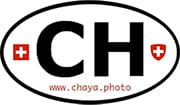The fantastic website DxOMark is probably very well known to you at this time. If not, please stop everything and check it out right now! They take camera and brand discussions into the real world, with data supporting any analysis that you can come up with. The latest test they ran was with a production D800, one of the brightest and most controversial among Nikon’s new products.
The D800 generated an enormous buzz all around the world. From the unstoppable chattering about its possible release, until severe critics and drooling after it was finally official. The ones who liked it were amazed by sensor, megapixels, quality, video and much more. Critics jumped to claim that the amount of pixels squeezed onto the sensor would bring spectacular noise and digital gimmicks to the images. I don´t agree with neither Critics nor Lovers, much on the opposite! Who was right? I’ll ask the data from DxOMark to help on the next paragraphs.
How does it compare to others?
I tried to get some of the most notable cameras lined up here. Unfortunately the 5DIII is not released and analyzed yet, but as soon as it comes out, look for a new review here. If you have suggestions on what cameras to add, please tell me and I’ll see to it. Just browse through the images below to view the data, or read on for my brief analysis.
Overall Score vs MegaPixel Marketing Trick
With a 95 rating Nikon D800 got the highest score in DxOMark history. According to the websitethe sensor is so good that it became the new reference to which others will be compared. They called it a “complete success in every sensor-related respect” and wrote that “it boasts an unmatched quality-to-price ratio by being the cheapest (by far) among the 8 top cameras. The sensor is even comparable in quality to the best medium-format sensors out there, and even outperforms them at higher ISOs”. Looks like it is no trick after all.
ISO
High ISO performance was got another very good review, called “a pleasant surprise”. As seen on the graphic, results are comparable to the big sisters D3s and D4 and just a tad above Canon 5D’s sensor results. Notice that the difference gets a little steeper on the extreme 12800 ISO.
Dynamic Range
D800 is slightly better in low ISO, and loses very little ground as ISO rises. The older sensor in 5D gets somewhat behind, but the real comparison will come with Canon’s new installment, soon to come.
Conclusions
DxOMark still needs to run more tests to evaluate D800’s performance with top notch lenses, and the necessary comparison with Canon 5D III. I would expect ISO performance on the 5D to be a tough competition, although Nikon’s definition is probably strength to be beaten. Despite that, it is perfectly clear that Nikon’s D800 is a superb camera, much more than the rumored marketing gimmick with the huge megapixel count.
Results were so amazing that I decided to compare D800 against Phase One IQ380 Digital Back, the previous champion. See that in the Bonus Section below
Bonus
Before moving any further, I must say aligning US$3k X US$50k cameras is an unfair match. Phase One has 80Mp and is an impressive medium format camera. D800 still does quite well, despite the colossal price tag difference. Check the images below and get your own conclusions.








